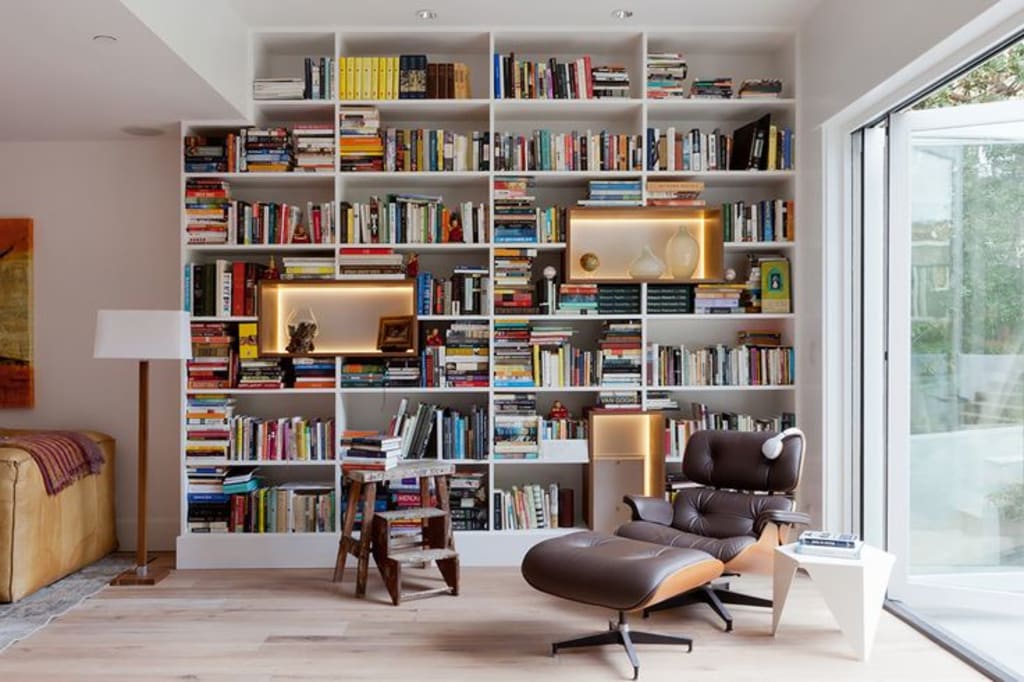TRANSFORMIMG SPACES
Evolution of Library Design for the Modern Age

Library designs have evolved significantly over time to adapt to changing needs, technological advancements, and the evolving role of libraries in society. Here are some key aspects of library design:
Traditional Libraries:
Historically, libraries were designed as quiet, contemplative spaces with rows of bookshelves, reading tables, and study carrels.
Ornate architectural elements and large reading rooms were common in classical libraries, symbolizing the importance of knowledge and education.
Modern Library Design:
Modern library designs emphasize flexibility and openness to accommodate various functions beyond reading, such as group discussions, events, and digital resources.
Open floor plans, movable furniture, and multipurpose spaces are common features to accommodate changing user needs.
Digital Integration:
With the digital age, libraries incorporate technology with computer stations, charging stations, and spaces for virtual learning.
Design includes considerations for power outlets, strong Wi-Fi connectivity, and ergonomic seating for digital device use.
Community Engagement:
Libraries have transformed into community hubs, offering meeting rooms, makerspaces, and areas for workshops and events.
Design fosters social interaction and collaborative workspaces, reflecting the library's role as a space for learning, creating, and connecting.
Sustainability:
Many modern library designs prioritize environmental sustainability with energy-efficient lighting, HVAC systems, and materials.
Incorporating natural light, green spaces, and eco-friendly materials create a more comfortable and environmentally responsible space.
Flexible Layouts:
Modular furniture and movable shelving enable libraries to reconfigure spaces quickly to accommodate different events and user preferences.
Furniture on wheels, folding partitions, and adaptable seating contribute to the versatility of library layouts.
Inclusivity and Accessibility:
Library designs strive to be inclusive and accessible to all users, incorporating features like ramps, elevators, and assistive technologies.
Signage, wayfinding, and spaces are designed to accommodate people with various physical abilities.
Cultural Sensitivity:
Libraries in diverse communities consider cultural influences in design to create welcoming spaces for patrons from different backgrounds.
Design elements might reflect local art, history, and languages.
Aesthetics and Comfort:
Comfortable seating, cozy reading nooks, and pleasing aesthetics enhance the overall user experience.
Libraries often use calming colors, natural materials, and soundproofing to create a tranquil atmosphere.
Virtual Access:
Libraries increasingly offer virtual access to resources, and design considerations extend to user-friendly websites, apps, and online catalogs.
Hybrid Spaces:
The concept of hybrid libraries integrates physical spaces with online resources, enabling users to seamlessly access digital and physical materials.
Biophilic Design:
Biophilic design integrates natural elements and materials into library spaces, fostering a connection with the natural world.
Living walls, indoor plants, and large windows that offer views of outdoor landscapes are incorporated to create a calming and rejuvenating environment.
Learning Commons:
Learning commons are designed as dynamic, multifunctional spaces that merge traditional library functions with collaborative learning and technology.
These areas often feature interactive displays, group study rooms, multimedia stations, and open seating arrangements to facilitate group work and technology-enabled learning.
Quiet Zones and Active Zones:
Libraries increasingly incorporate a mix of quiet zones for focused study and active zones for collaborative work and discussions.
Design elements such as acoustic panels, partition walls, and soundproof booths help manage noise levels and create distinct areas for various activities.
Artistic Expression:
Libraries are becoming platforms for artistic expression, featuring art installations, galleries, and creative workshops.
Artistic design elements, including murals, sculptures, and interactive exhibits, enrich the library environment and engage users in unique ways.
Library Cafes and Social Spaces:
Many libraries now include cafes or coffee shops as part of their design, providing patrons with a place to relax, socialize, and enjoy refreshments.
These spaces contribute to the library's role as a social and cultural hub within the community.
Library design continues to evolve to match the changing needs and expectations of users in the digital age while still honoring the traditional values of learning, discovery, and community engagement.
About the Creator
Alishba Humair
Passionate storyteller and wordsmith, I am on a journey to captivate hearts and minds through the power of words.My goal is to inspire, educate, and spark meaningful conversations that make a positive impact on the world.






Comments
There are no comments for this story
Be the first to respond and start the conversation.